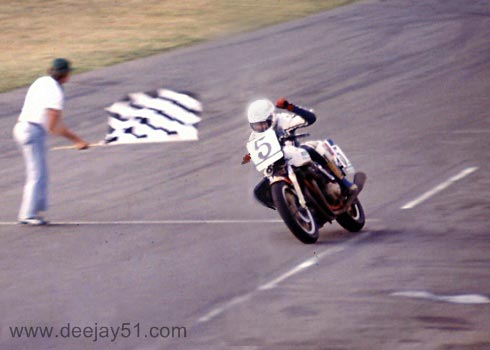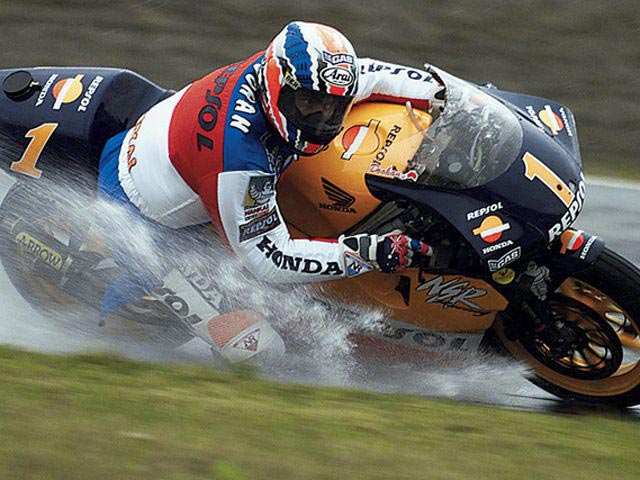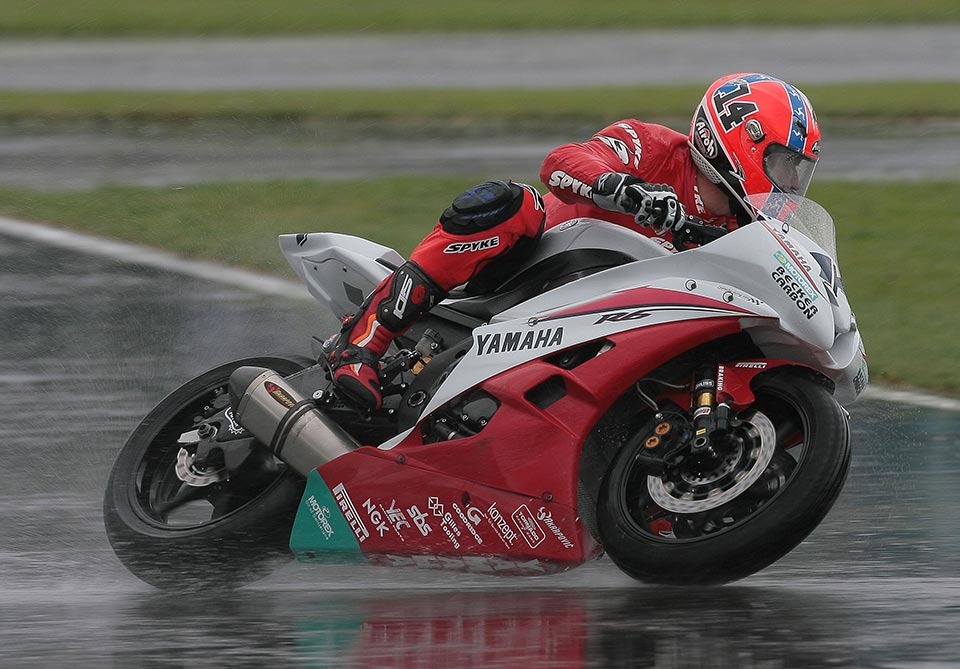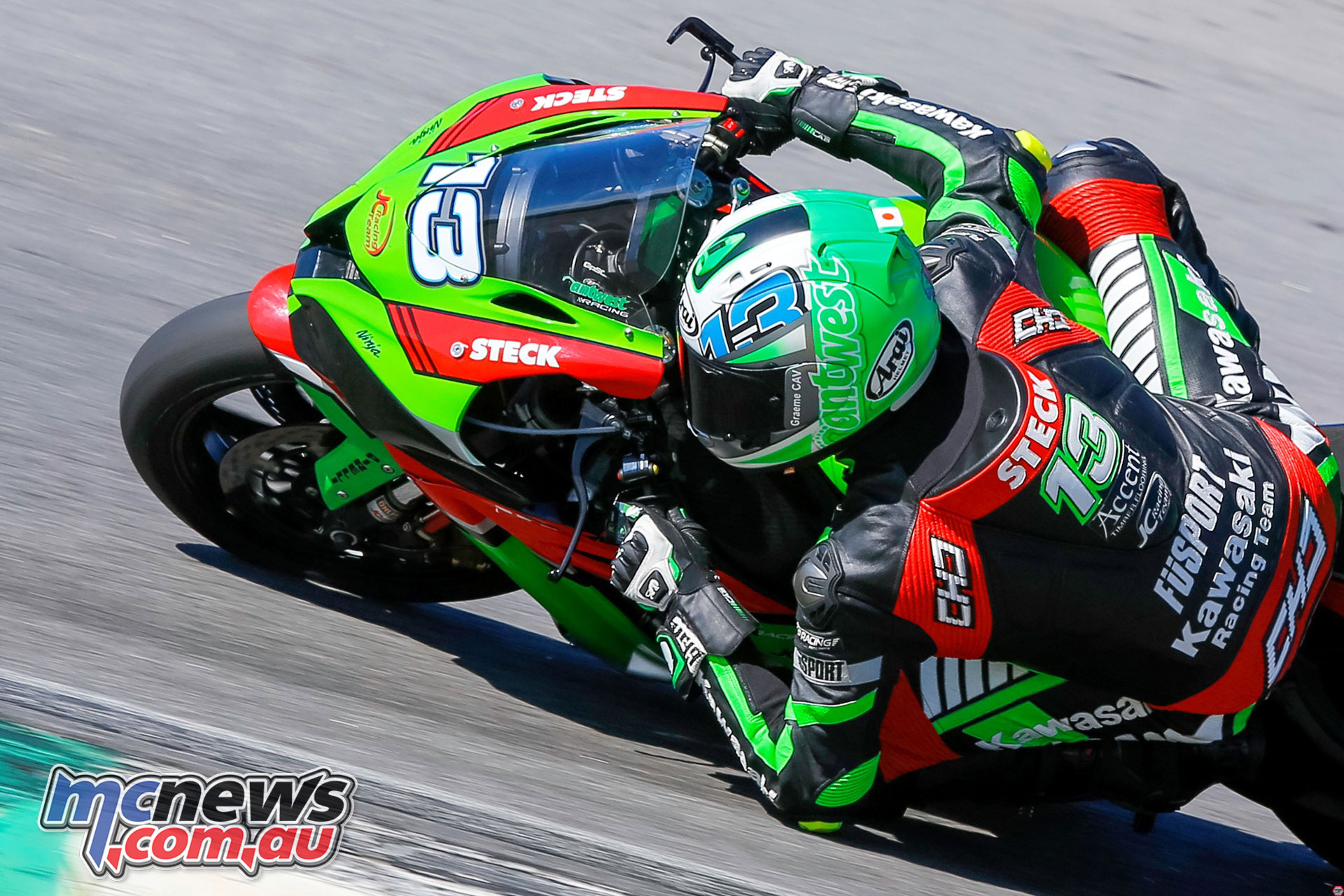In the wet – By Phil Hall
Last Saturday’s Dutch TT provided us with yet another example of the freakish wet weather riding skills of Anthony West. And it highlights again the strange conundrum of how riders from what is one of the driest continents on the planet, seem to be masters of wet riding conditions. Because, you see, Westie is only one of a long list of riders who have shown such skills. Allow me to illustrate some others.
Tony Hatton is widely regarded as one of Australia’s most versatile and knowledgeable riders. And, back in the day, Tony illustrated that by riding all manner of bikes in many different categories. From a tiny MT125 Honda grand prix bike to a big BMW “boxer” twin in production racing, if it had the famous #55 on the front of it, you could be sure that the bike would be close to the front. It was the Arai 500 endurance race at Bathurst in 1979 that showed us just how brilliant a rider he was, not just in the wet, but overall. The race started, as a nod of the head to the European endurance races, late on Saturday afternoon and the regulations specified that, as per endurance racing requirements, the bikes be fitted with lights.
For many teams this wasn’t an issue as they were running production bikes anyway and it was just a matter of re-installing the stock headlight, fitting the front number board around it and going racing. But Tony’s bike was no production bike. A rare as hen’s teeth Honda 900 Bol d’Or, it was (reputedly) fitted with a lost of HRC “goodies” that made it far removed from the Improved Production class in which it was competing. Nevertheless, the bike was allowed to run so the results stand. But, fitting a working headlight to a bike that had a total loss electrical system was going to be a challenge. So Mick Smith, the Honda “guru” mechanic, came up with the simple wheeze of fitting an Eveready MagnetLite torch to the front of the bike!
There were howls of protest and threats of mayhem from many of the other teams when the bike was rolled onto the grid for the Le Mans start, but, a hasty check of the Supplementary Regulations revealed that the team HAD satisfied them in that the bike was fitted with a “functioning headlight”
With steam issuing from many sets of ears, the race began. Not long after the start, however, it started to rain. Not only did it start raining but a dense layer of cloud settled over the top of the mountain course that ended up being so thick that it was barely possible to see the bikes from the spectator stands. Quite how the riders saw where they were going is another issue entirely. Many riders fell victim to the conditions, but Hatton soldiered on. Indeed, not only did he soldier on but his lap times, after taking a hit when the rain first started, went back up to within only a second or two of what they had been in the dry.
Race commentators were double and triple checking their stop watches but it was fact; Hatton had barely slowed down at all regardless of the appalling conditions. While most riders were losing anywhere between 10 and 15 seconds a lap compared to their dry lap pace, Hatton was treating the race like it WAS dry. It didn’t take him long to be lapping well into the “meat” of the pack but danger was lurking. The batteries in the torch were going flat and the watchers on the pit wall could see. Then the bike came by with no light at all! The Clerk of the Course was besieged by protesters, demanding that the bike be disqualified. Somehow the Honda pit crew were able to notify Tony and, on the next lap, he pitted. The torch was ripped off the bike and another one with new batteries was duct-taped in place. Hatton exited the pits without ever having his lead threatened.
As the race drew to a close and the rain eased a little, we were all aware that we were watching one of the true masterful displays of riding, wet weather or not. I might add that I have no photographs of this race as my camera, though cheap by professional standards, was the only one I had and there was no way I was going to risk it in those conditions. Standing trackside in the Dipper, I could only marvel at Hatton’s bike control while trying to stop my teeth from rattling their way out of my mouth so saturated and cold was I.
Hatton crossed the line an easy winner, recording what was probably his greatest-ever ride. But there was a postscript to the story that makes it even more remarkable. Checking the lap times after the race, the pit crew noticed a “spike” in Tony’s lap times on the very last lap. Figuring that he had slowed, knowing that the race was all-but-won, they asked Tony and that is when he “fessed up”
Coming into Forrest Elbow for the last time, the front end of the Honda let go and washed out. Tony skidded trough the corner with the bike on its side and, somehow, he wrestled it back up on to level again and proceeded down Conrod Straight. And only lost a second in the process. Truly an astonishing achievement.
Just a little over a year later we were treated to another wonderful exhibition of wet weather riding. Castrol Six Hour race, Amaroo Park, October 1980. Wollongong ace, Wayne Gardner, was teamed with legendary hard man, Andrew “AJ” Johnson on the Mentor Motorcycles Honda CB1100R. The manufacturer’s war was at fever pitch as was the tyre war. Ranged against the “star” team was the Suzuki GSX1100 “wire wheel” special of Neil Chivas and John Pace. What happened in that race and the controversy that it generated has gone down in road racing history but I’m not going to touch on that in this article. I want to just concentrate on one little incident that concerns the main subject here. Because, for those who don’t remember, the 1980 race took place on a grey and miserable Sunday that was blighted by almost continuous rain for the whole race.
Standing behind the Armco barrier that bordered the corner leading onto the main straight, my brother and I were attempting to photograph the spectacle without risking life and camera. As we waited for the leader to come though we saw the familiar #5 exit Stop Corner and start peel right for the next corner. As Gardner did so, there was a rooster tail of spray from the Honda’s rear wheel and the bike was doing its best to swap ends. But WG kept it pinned and we shook our heads as he blasted up the straight. Johnny Pace, also a fearsome and brave wet weather rider, was not far behind on the Suzuki, throwing up huge sprays of water from the back wheel.
On the next lap it was clear that JP had caught up considerably and was right on Wayne’s tail. As he peeled right for the last corner, Gardner looked behind him, peering under his right armpit. At the same time he gave the bike a big fistful and the rear end stepped out towards the Armco where we were standing. Keeping it pinned, he gassed trough the corner, all the time looking into JP’s eyes behind. The unspoken message was “I can do this and I will, as often as I need to. Are you willing to take the same risk?”
The next lap saw Pace a little further back than he had been and, barring pit stops, the Suzuki stayed behind for the rest of the race. It was a rare privilege to have seen this little piece of high-speed theatre.
Fast forward to today’s era. Anthony West’s win at Assen came on a wet track. It came exactly 13 years to the day, from when he scored his last Grand Prix win, on a 250 Aprilia, on a wet track, at Assen. Freaky. But, of course, we had seen Westie’s wet-weather brilliance more recently than that. Who can forget his wildcard rides for the Yamaha team in the WSS a few years later? At Silverstone, on a track that was wet to Noahic proportions, Anthony astonished by treating the track, the rest of the field and the conditions with contempt, sliding the bike through the puddles and backing it in under braking as if the track was dry.
So, what IS it that makes Australian riders so good in the rain? Well, last week I was able to attend the motoDNA Big Day Out in Sydney. As well as receiving valuable instruction from former Grand Prix riders, the attendees could also take advantage of a suspension setting clinic run by former international, Peter Goddard. As I listened, I noted how much emphasis Goddard was placing on getting the front suspension right. And it struck a chord because, another instructor on the day, former 500 rider, Gary McCoy, was one who never seemed to worry much about what the back end was doing as long as the front end was planted.
It reminded me of an interview I heard many years ago with Wayne Gardner who was asked just this question. His answer was that Australian riders are probably so good in the wet because of their dirt bike riding background. And he went on to say that it never really worried him what the back end was doing as long as he knew where the front end was headed. When I brought this up with Gary later, he agreed (no great surprise there). It’s no surprise also that, even though the young Spanish riders coming through the ranks now have ridden almost exclusively on the TAR, many of them still choose to TRAIN on the dirt, not just for fitness (obviously) but also to gain confidence when a bike is sliding around.
In the wet? Not a place where I like to ride, but it sure is very special watching a rider who can master those conditions.



























